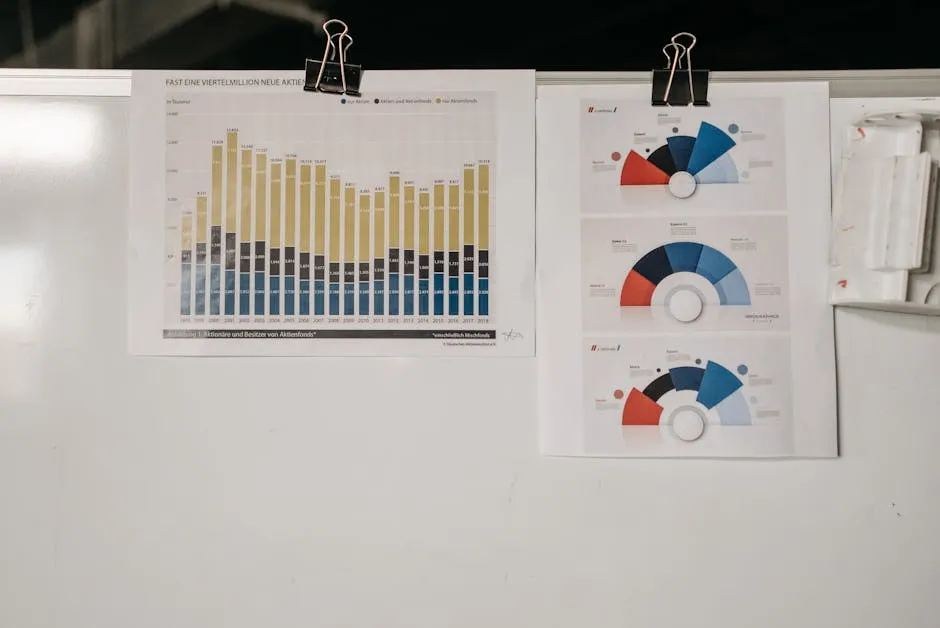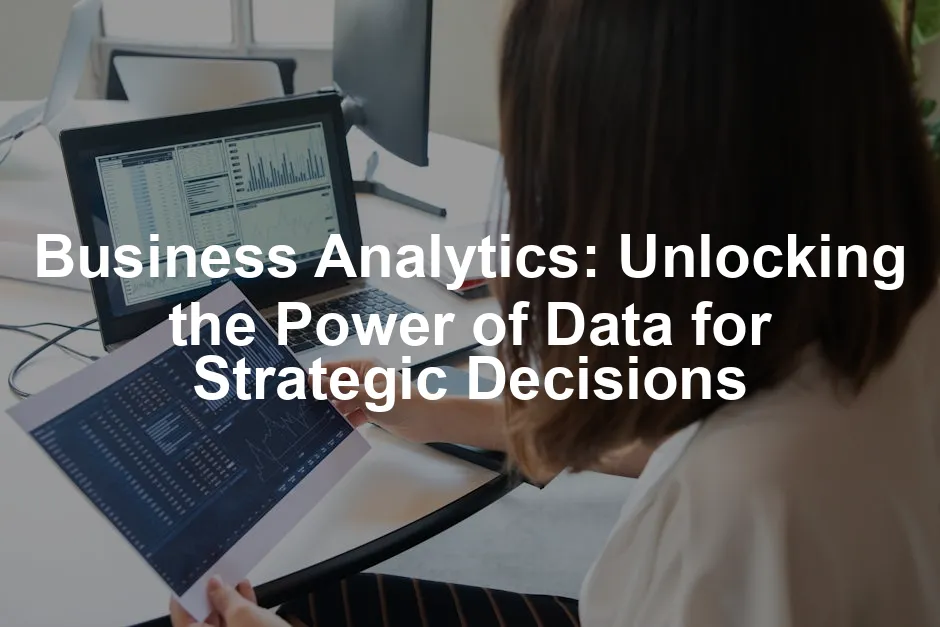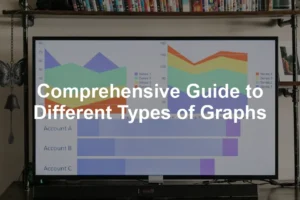Introduction
Business analytics helps organizations harness data effectively. In today’s world, data drives decisions, influencing everything from marketing to operations. This article highlights how businesses leverage analytics for informed choices and better strategies.
To dive deeper into the world of data visualization, consider using Tableau Desktop 2022.1 – Data Visualization Software. It’s a powerful tool that helps transform your data into visually appealing dashboards, making it easier to understand complex data patterns.

Summary and Overview
Business analytics involves analyzing data to gain insights for decision-making. It combines statistical analysis, data visualization, and predictive modeling. Companies use this approach to improve efficiency and gain a competitive edge. The major components include descriptive, predictive, and prescriptive analytics. Each type serves a unique purpose, aiding organizations in understanding past performance, forecasting future trends, and recommending actions based on data.
The Importance of Business Analytics
Understanding Business Analytics
Business analytics is the process of using data to enhance decision-making in organizations. Unlike business intelligence, which primarily focuses on historical data, analytics goes further by predicting future outcomes and suggesting actions. This evolution allows businesses to turn raw data into valuable insights. As data usage in businesses continues to grow, so does the significance of analytics in shaping effective strategies. A recent study shows that companies using analytics have seen a 15% increase in productivity on average.
If you’re looking for a great starting point into analytics, you might want to check out Google Analytics for Beginners by Ryan Deiss. This book provides foundational knowledge to help you understand one of the most powerful tools in analytics.

Key Types of Business Analytics
Descriptive Analytics
Descriptive analytics focuses on historical data to answer the question, “What happened?” It analyzes past performance, identifying trends and patterns. Tools like Google Analytics and Tableau help businesses track key performance indicators (KPIs). For example, a retail company might use descriptive analytics to assess sales trends from previous years. Research indicates that about 70% of organizations employ descriptive analytics to enhance their understanding of business performance.
Predictive Analytics
Predictive analytics involves using data to forecast future trends. It combines techniques like statistical modeling and machine learning. These methods analyze historical data patterns to make informed predictions.
In the real world, businesses rely on predictive analytics in various sectors. For instance, retailers use it to anticipate customer buying behavior. Similarly, healthcare providers predict patient outcomes, enhancing care efficiency. For more insights on how predictive analytics can impact team performance, check out this article on predictive analytics for Croatia men’s national basketball team performance 2024.

Studies show that predictive models can achieve up to 85% accuracy in business forecasts. This level of precision empowers organizations to make strategic decisions based on reliable insights. By leveraging statistical predictions, companies can stay ahead of the competition. To enhance your predictive analytics skills, consider reading Predictive Analytics for Dummies by Anasse Bari. This book breaks down the complexities of predictive modeling into easy-to-understand lessons.
Prescriptive Analytics
Prescriptive analytics helps organizations determine the best course of action. It goes beyond merely predicting outcomes to providing actionable recommendations. This type of analytics utilizes optimization techniques and algorithms to suggest strategies.
Tools like decision trees and simulation models play a crucial role in prescriptive analytics. They support decision-making by analyzing potential outcomes and their impacts. This guidance is invaluable for businesses facing complex choices.

Research indicates that companies implementing prescriptive analytics can improve their decision-making efficiency by 20%. By focusing on decision recommendations, organizations can optimize operations and enhance performance. This leads to a more strategic approach to achieving business goals. For a deeper dive into prescriptive analytics, check out Business Analytics: Methods, Models, and Applications.
Business Analytics vs. Related Concepts
Business Analytics vs. Business Intelligence
Business analytics and business intelligence (BI) often get confused, yet they serve different purposes. BI primarily focuses on historical data analysis, helping organizations understand past performance. It uses tools to gather, manage, and present data insights, often through dashboards and reports.
On the other hand, business analytics dives deeper. It not only analyzes what happened but also predicts what could happen and prescribes actions. This approach empowers businesses to make proactive decisions based on data-driven insights. For further understanding, explore the differences in comparing statistical models vs non statistical frameworks in business intelligence.

For example, a company might use BI to assess last year’s sales trends. In contrast, with business analytics, they could forecast next quarter’s sales and recommend marketing strategies to boost performance.
Recent surveys show that while 90% of companies use BI tools, only 45% have adopted business analytics strategies. This gap highlights the growing need for organizations to embrace analytics for enhanced decision-making.
Business Analytics vs. Data Analytics
While business analytics and data analytics may sound similar, they differ in focus. Data analytics refers to the general examination of data sets to extract insights. It encompasses various fields and can be applied in non-business contexts.
Conversely, business analytics specifically targets business goals. It employs data analysis to enhance decision-making processes and improve performance. The focus is on actionable insights that drive strategic initiatives.
For instance, a healthcare provider might use data analytics to study patient demographics. However, a business analytics approach would analyze this data to improve patient care strategies and optimize resource allocation.

The demand for data analytics professionals is surging, with job postings increasing by 30% over the past year. Companies recognize the value of analytical methods in harnessing data for competitive advantage.
Business Analytics vs. Data Science
Business analytics and data science often get mixed up, but they serve unique purposes. Let’s break down their roles and responsibilities.
Business analysts focus on using data to inform business decisions. They analyze past performance, identify trends, and recommend actions. Their primary goal is improving business outcomes through actionable insights.
On the other hand, data scientists dive into advanced statistical methods and algorithms. They build models to predict future trends and uncover hidden patterns in large datasets. Their role often requires a deeper technical skill set, including programming and machine learning.

When it comes to skills, business analysts typically need strong analytical and communication skills. They should be adept at interpreting data and presenting findings to stakeholders. In comparison, data scientists require expertise in programming languages like Python or R, as well as a solid foundation in statistics.
The job market reflects this distinction. Recent data shows a 30% increase in job postings for data scientists, highlighting the growing demand for their specialized skills. Meanwhile, business analytics roles continue to thrive, emphasizing the importance of analytical skills in both areas. Understanding these differences is crucial for organizations aiming to utilize data effectively. If you’re interested in honing your Python skills for data analysis, check out Python for Data Analysis by Wes McKinney.
Challenges in Business Analytics
Data Quality and Integration
Implementing business analytics can be challenging for many organizations. One major issue is data silos. Different departments often store data in isolated systems, making integration tough. This fragmentation hinders a complete view of operations. A recent study found that about 60% of companies struggle with data quality issues. Poor data quality can lead to inaccurate insights, which affects decision-making.

Ensuring data accuracy is crucial. Organizations must focus on data quality assurance to prevent errors. Regular audits and validation processes can help maintain data integrity. Companies need a unified approach to data management to overcome these integration hurdles. Achieving high-quality data will significantly enhance the effectiveness of analytics initiatives. For solutions on improving data accuracy, refer to this article on solutions for improving data accuracy with wireless loggers in industrial applications.
Skill Gaps and Technology Adoption
The demand for skilled professionals in business analytics continues to rise. Companies are seeking individuals who can effectively interpret data and provide actionable insights. However, many organizations face a significant skills gap. Training and upskilling are essential to equip employees with the necessary analytics expertise.

Additionally, the technology landscape is continually evolving. Familiarity with analytics tools is vital for success. Platforms like Tableau and Power BI are popular, yet not all employees are proficient in using them. As the need for analytics professionals grows, companies must invest in professional development. Reports indicate that job postings for analytics roles have surged by over 30% in the past year. This trend signifies the increasing importance of skilled analysts in navigating today’s data-driven environment. To get started with Power BI, you can find helpful resources in Microsoft Power BI Desktop for Beginners.
Future Trends in Business Analytics
The landscape of business analytics is rapidly changing. Emerging technologies are reshaping how companies analyze data and make decisions. Two key trends stand out: AI and machine learning, and the rise of self-service analytics.

AI and machine learning are revolutionizing analytics. These technologies enable organizations to process vast amounts of data quickly. They can identify patterns and trends that humans might miss. For example, predictive analytics can now forecast customer behavior with remarkable accuracy. Studies predict that the market for AI in analytics will grow significantly, reaching over $30 billion by 2026.
Self-service analytics is gaining traction as well. This approach empowers non-technical users to analyze data independently. With user-friendly tools, employees can generate reports and insights without relying on IT teams. Companies are seeing increased efficiency and faster decision-making as a result. A recent survey shows that 75% of organizations are adopting self-service analytics to enhance their business processes.
Together, these trends highlight the future of analytics as more automated and accessible. Businesses that embrace these changes will likely gain a competitive edge. For those wanting to dive deeper into data visualization, consider Data Visualization: A Practical Introduction by Kieran Healy. This book provides practical insights into creating compelling visual data stories.

Conclusion
Business analytics plays a vital role in driving success in organizations. It enables informed decision-making, enhances efficiency, and fosters a competitive advantage. As data continues to grow, adopting analytics becomes essential for businesses. Embrace this powerful tool to harness insights and shape future strategies. Don’t fall behind—start your analytics journey today!
Please let us know what you think about our content by leaving a comment down below!
Thank you for reading till here 🙂
All images from Pexels




